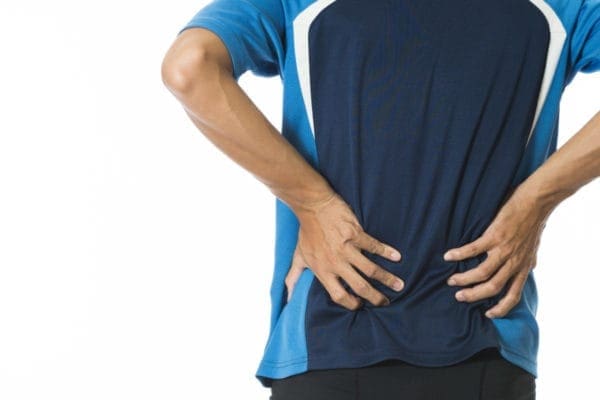How To Get Rid Of Muscle Soreness After Workout
Sore Muscles from Exercise

Exercise is an important part of a healthy, active lifestyle. It improves your heart and lungs and builds strong bones and muscles. However, exercise can cause sore muscles. This is common if you try a new exercise or increase your intensity. You may use new muscles, strain your muscles, or get small tears in your muscle fibers. These are signs that your muscles are trying to respond to this new exercise, grow, and get stronger.
Path to improved health
Your muscles may get sore right away. This is known as acute soreness. You may feel them ache or tighten up about 12 hours after you exercise. In some cases, the discomfort may peak 48 to 72 hours afterward. This is called delayed-onset muscle soreness. During this time, your muscles repair and strengthen themselves. Sore muscle pain can improve quickly or last several days.
To help relieve muscle soreness, try:
- Gentle stretching.
- Muscle massage.
- Rest.
- Ice to help reduce inflammation.
- Heat to help increase blood flow to your muscles. Even a warm bath or shower can help.
- Over-the-counter (OTC) pain medicine, such as a nonsteroidal anti-inflammatory drug (NSAID) like ibuprofen (brand name: Advil).
- OTC creams and gels (brand names: IcyHot and Aspercreme) that contain menthol or capsaicin can ease muscle soreness.
Unfortunately, you can't avoid sore muscles. It's part of getting stronger and healthier. There are some things you can do to help lessen the amount of soreness.
- Warm up.Studies show that warming up your muscles before exercise may be better than stretching them. It wakes up your muscles by increasing blood flow to them. To warm up, do light versions of certain exercises. These include slow jogging or biking, jumping rope, or lifting light weights.
- Drink water.Water helps control your body temperature, loosen your joints, and transport nutrients to create energy. Without water, your body will struggle to perform at its highest level. You may have muscle cramps, fatigue, dizziness, or more serious symptoms.
- Limited rest.Wait about 48 hours before working the same muscle groups in the same way (with the same intensity or for as long). Limited or lighter exercise of the same muscles can actually help. For example, if you were sore after running, a light walk or bike ride the next few days can help. Avoid complete rest and immobilization.
- Use proper technique.Doing exercises the right way helps protect you from muscle strain or injury. If you belong to a gym or health club, ask a trainer or instructor for help. They can show you the proper way to lift weights and use the machines and equipment.
- Cool down.It's important to stretch after you work out. Your muscles are relaxed and more flexible when they're warm. Stretching also circulates blood away from your muscles and back to your heart to aid in recovery.
- Stay within your limits.You may be tempted to push yourself but remember to progress slowly with exercise. Over time, you can increase the amount of weight you lift or the length of time you run. If you try to increase too soon, you may injure yourself.
Things to consider
Sore muscles are normal. They grow back strong and are able to work at a higher level of intensity for a longer time. However, be careful that you don't injure your muscles, tendons, or joints. Pain closer to the joint may be a signal of a more serious injury.
If you think you have a strain or a sprain, try the RICE approach.
- You may need to rest the injury all or part of the way. It will depend on how bad it is.
- Use ice packs, ice slush baths, or ice massages. These can decrease your swelling, pain, bruising, and muscle spasms. You can use ice for up to 3 days after the injury.
- You can wrap your injury to reduce swelling and bruising. Keep it wrapped for up to a week after the injury.
- Raise your injury at or above your heart. This helps prevent swelling and reduces bruising. Keep it elevated for 2 to 3 hours a day, if possible.
Contact your doctor or seek care if:
- Your muscle soreness lasts for more than a week.
- Your pain is unbearable and prevents you from moving.
- Your pain gets worse with exercise.
- Your pain causes dizziness or trouble breathing.
- You notice redness, swelling, or warmth in the sore muscles.
- The RICE treatment doesn't work.
- You feel pain in the joint, over the bones, or in the tendons.
Questions for your doctor
- How long will it take for my muscles to feel better?
- Are there certain exercises that are more likely to cause muscle soreness?
- How does a sore muscle feel different from an injury?
- If I use a muscle while it's sore, am I at risk for injuring it?
- How do I know my pain is not from something more serious?
Resources
American College of Sports Medicine: Delayed Onset Muscle Soreness
![]()
Copyright © American Academy of Family Physicians
This information provides a general overview and may not apply to everyone. Talk to your family doctor to find out if this information applies to you and to get more information on this subject.
How To Get Rid Of Muscle Soreness After Workout
Source: https://familydoctor.org/sore-muscles/
Posted by: pardonound1973.blogspot.com

0 Response to "How To Get Rid Of Muscle Soreness After Workout"
Post a Comment